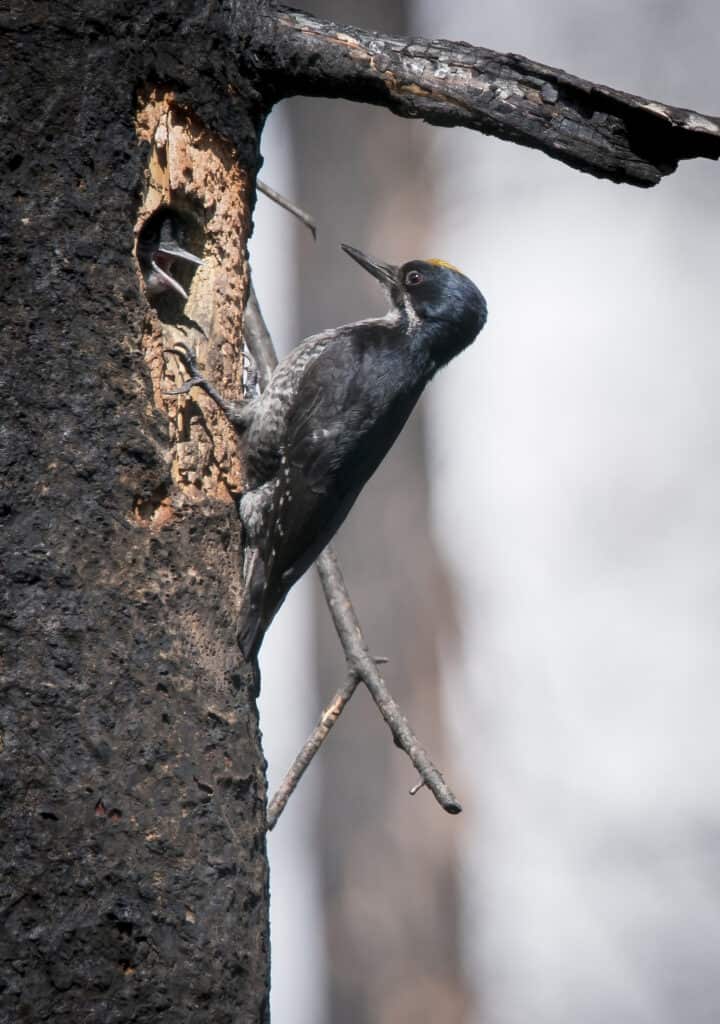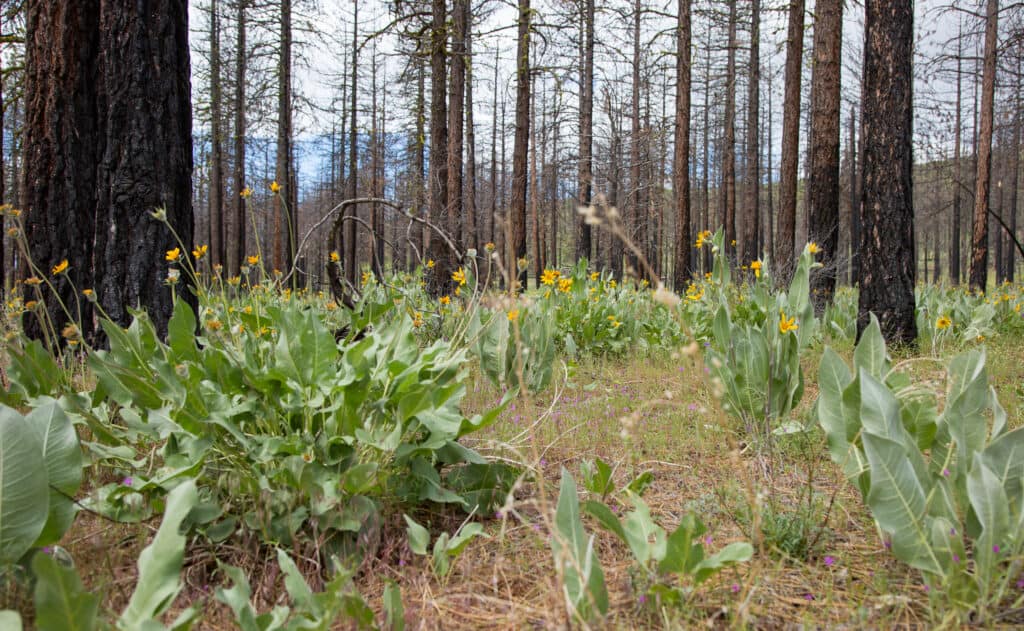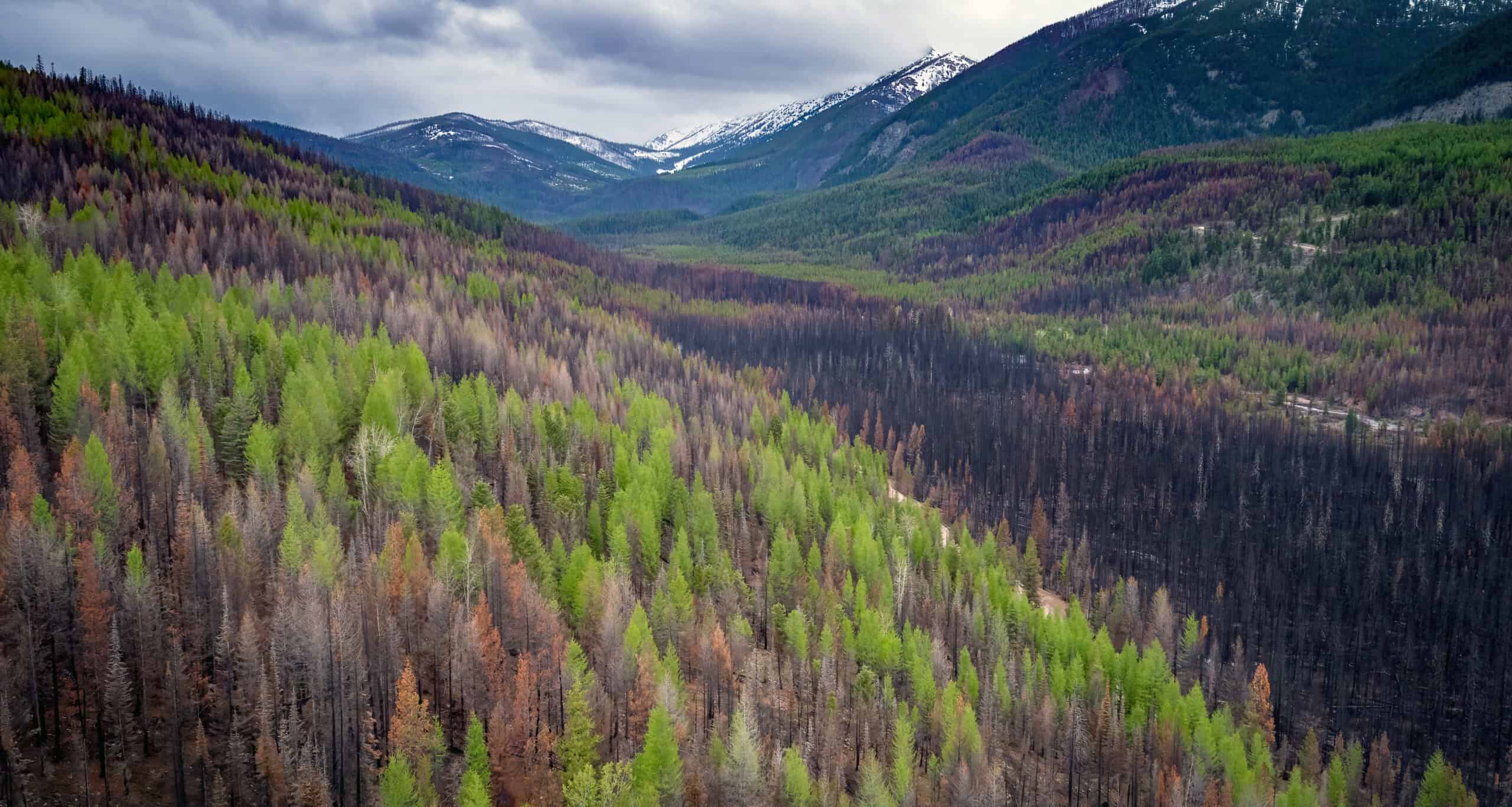Share this article
Black-backed woodpecker model informs fire management decisions
Black-backed woodpeckers prefer a mosaic of burns after a fire
The best model to predict potential black-backed woodpecker abundance after wildfire incorporates a mosaic of different types of burns after a fire.
Interested in how black-backed woodpeckers (Picoides arcticus) respond to fire, researchers sought to develop fire management tools to aid planning after burns in California.
“Fire patterns continue to change, so we need to create pathways to adapt our toolbox for biodiversity conservation in the face of large forest fires,” said Andrew Stillman, a postdoctoral fellow at the Cornell Lab of Ornithology and the Cornell Atkinson Center for Sustainability.
Stillman led a study published in Ecological Applications outlining a model that uses over 10 years of black-backed woodpecker surveys conducted by The Institute for Bird Populations, as well as satellite-derived fire information, to predict potential woodpecker densities across a burned area. The model has also been made into an online app that can provide this information to managers in just a few minutes.
Although the model is built for woodpeckers, it can highlight valuable habitats for other species that depend on different fire mosaics as well.

Black-backed woodpeckers are a “flagship” species for post-fire recovery, Stillman said. Adults use areas recently burned at high severity because they provide nesting trees and beetles to eat. Young woodpeckers use low-severity areas to hide in trees from predators.
Stillman and his colleagues originally created three different models to predict black-backed woodpecker occupancy based on 11 years of surveys in over 130 different fires. “It was a competition between three separate models describing habitat associations for black-backed woodpeckers, and we wanted to see which one gave us the best predictions,” Stillman said. “The winning model incorporated variation in fire characteristics and temporal habitat dynamics after fire.”
Stillman and his colleagues made the model accessible through an app for managers. Users input burn severity and area boundaries. The app can then predict black-backed woodpecker potential abundance and densities at high resolution within minutes. “You can grab a cup of coffee, and it’s done,” he said.
The app cuts the time it would otherwise take for managers to survey burned areas – some of which can cover hundreds of square miles, he said. Because wildlife surveys are time-consuming and expensive, managers sometimes have to make decisions without baseline information on woodpecker populations.

In California, he said, pyrodiversity—patchworks of different burn severity—is on the decline. “There’s less of these mosaic patches that are good for biodiversity. Having a tool like this makes it easier to engage in adaptive management and respond to the changing reality of fire.”
While Stillman hopes the new tool can fill information gaps for forest managers in California, he also hopes this work will pave the way for additional tools that aid targeted, adaptive management in other systems.
The tool can also easily be updated as climate and mega-fires change. “Adaptive management in the face of climate change is an intentional piece of this tool, and there’s still work to be done.”
Header Image: Pyrodiversity, pictured here in Montana, includes a mosaic of burned, partially burned and living trees after a wildfire. Credit: Jeremy Roberts/www.ConservationMedia.com








